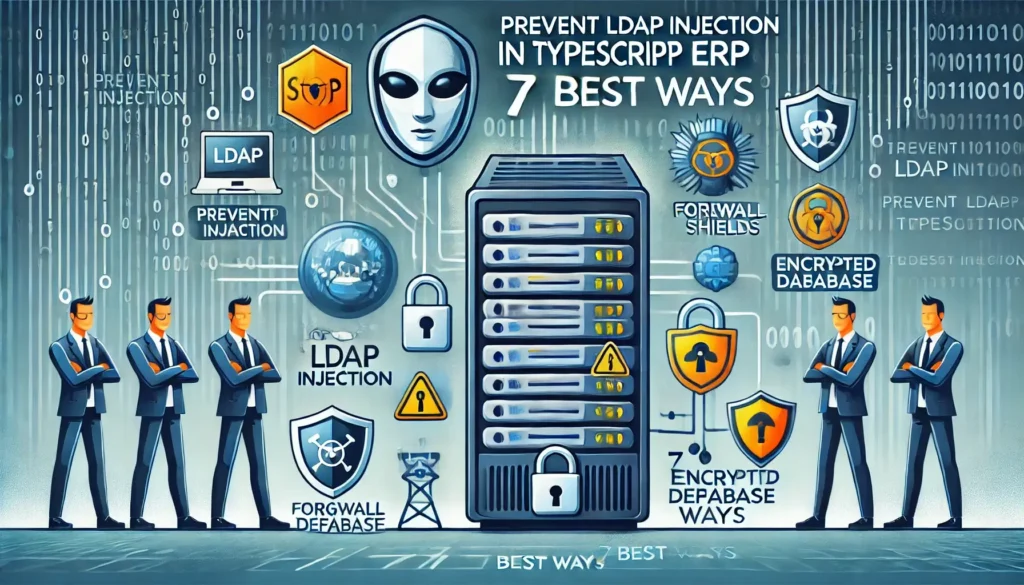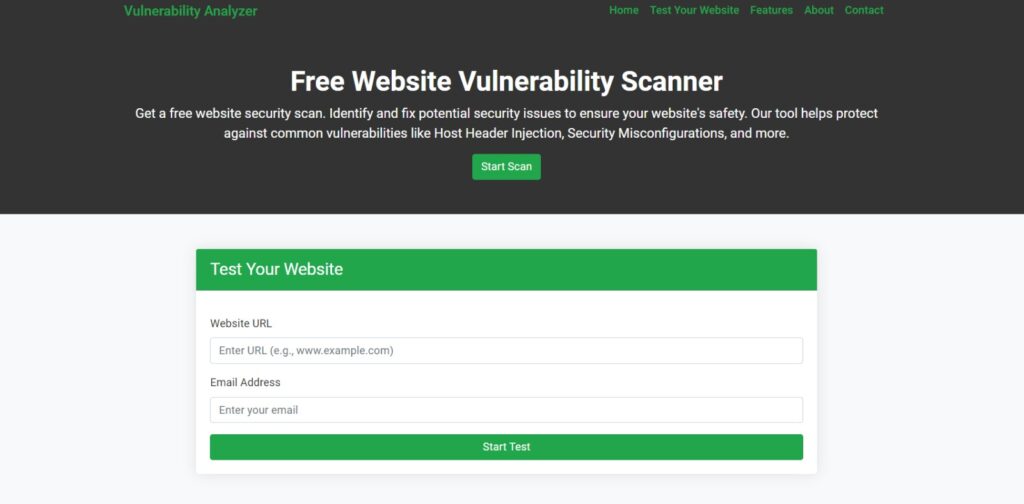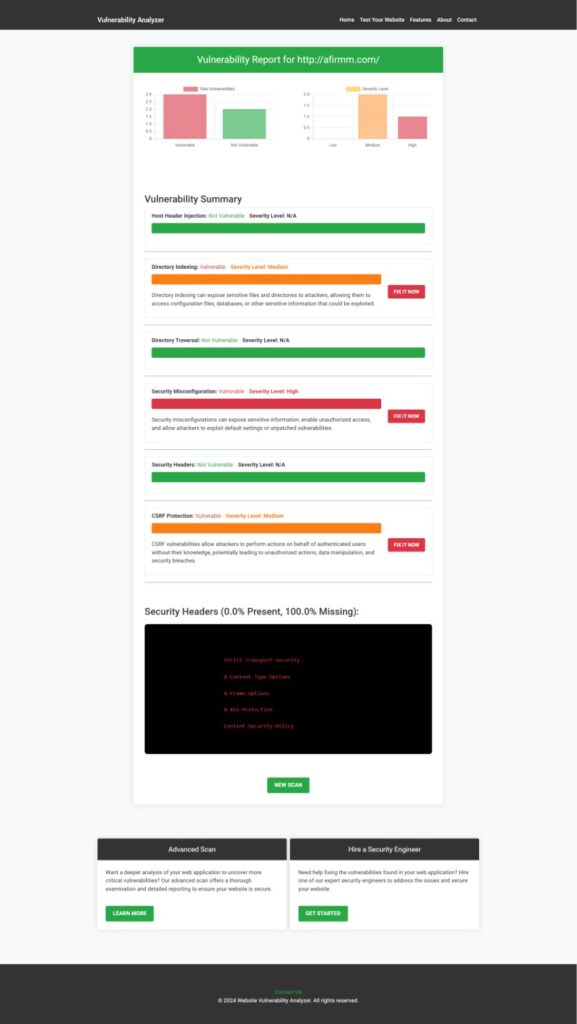7 Best Ways to Prevent LDAP Injection in TypeScript ERP
Preventing LDAP Injection in TypeScript-Based ERP
Lightweight Directory Access Protocol (LDAP) is widely used in Enterprise Resource Planning (ERP) systems to manage authentication and directory services. However, improper handling of LDAP queries can lead to LDAP injection vulnerabilities, allowing attackers to manipulate queries and access unauthorized data.

In this guide, we’ll explore how LDAP injection in TypeScript ERP applications occurs and the best ways to prevent it with secure coding practices.
What is LDAP Injection?
LDAP injection occurs when unvalidated user input is incorporated into an LDAP query, allowing attackers to modify queries and retrieve unauthorized information.
Example of LDAP Injection Vulnerability
Below is an insecure TypeScript code example that directly includes user input in an LDAP query:
import ldap from 'ldapjs';
function authenticateUser(username: string, password: string) {
const client = ldap.createClient({ url: 'ldap://example.com' });
const dn = `uid=${username},ou=users,dc=example,dc=com`;
client.bind(dn, password, (err) => {
if (err) {
console.error('Authentication failed:', err);
} else {
console.log('Authentication successful');
}
});
}In this example, the username is directly used in the DN string, making the system vulnerable to LDAP injection.
7 Best Ways to Prevent LDAP Injection in TypeScript ERP
1. Input Validation and Sanitization
Always validate and sanitize user inputs to remove special characters that can manipulate LDAP queries.
Secure Example:
import ldap from 'ldapjs';
function sanitizeInput(input: string): string {
return input.replace(/[*()\\\/]/g, ''); // Removes special characters
}
function authenticateUser(username: string, password: string) {
const sanitizedUsername = sanitizeInput(username);
const client = ldap.createClient({ url: 'ldap://example.com' });
const dn = `uid=${sanitizedUsername},ou=users,dc=example,dc=com`;
client.bind(dn, password, (err) => {
if (err) {
console.error('Authentication failed:', err);
} else {
console.log('Authentication successful');
}
});
}2. Use Parameterized Queries
Using parameterized queries ensures input data is handled separately from LDAP query logic.
import ldap from 'ldapjs';
function authenticateUser(username: string, password: string) {
const client = ldap.createClient({ url: 'ldap://example.com' });
const opts = {
filter: '(uid=?)',
scope: 'sub',
attributes: ['dn']
};
client.search('ou=users,dc=example,dc=com', opts, (err, res) => {
if (err) {
console.error('Search failed:', err);
return;
}
res.on('searchEntry', (entry) => {
const dn = entry.objectName;
client.bind(dn, password, (err) => {
if (err) {
console.error('Authentication failed:', err);
} else {
console.log('Authentication successful');
}
});
});
});
}3. Escape User Inputs
Use escape functions to handle special characters in user input properly.
import ldap from 'ldapjs';
import { escape } from 'ldapjs';
function authenticateUser(username: string, password: string) {
const escapedUsername = escape(username);
const client = ldap.createClient({ url: 'ldap://example.com' });
const dn = `uid=${escapedUsername},ou=users,dc=example,dc=com`;
client.bind(dn, password, (err) => {
if (err) {
console.error('Authentication failed:', err);
} else {
console.log('Authentication successful');
}
});
}4. Implement Least Privilege Principle
Ensure the LDAP user account used by the application has minimal privileges to reduce the impact of a potential attack.
Example LDAP Configuration for Least Privilege
dn: cn=appuser,ou=users,dc=example,dc=com
objectClass: organizationalRole
cn: appuser
description: Application user with limited privileges5. Use Secure LDAP (LDAPS)
Using LDAPS (LDAP over SSL/TLS) encrypts LDAP traffic, preventing attacks such as man-in-the-middle (MITM) attacks.
Modify the LDAP client connection to use ldaps:// instead of ldap://.
const client = ldap.createClient({ url: 'ldaps://example.com' });6. Conduct Regular Security Audits
Perform regular vulnerability assessments of your LDAP configurations and query implementations.
💡 Check your website for vulnerabilities using our free tool:
🔹 Website Vulnerability Scanner

7. Monitor and Log LDAP Activities
Enable logging to track LDAP query activities and detect suspicious login attempts or injection attacks.
import fs from 'fs';
function logLDAPActivity(message: string) {
fs.appendFileSync('ldap_log.txt', `${new Date().toISOString()} - ${message}\n`);
}
Related Cybersecurity Articles
Enhance your security knowledge with our previous blog posts:
- 🔗 Prevent HTTP Parameter Pollution in TypeScript
- 🔗 Fix Weak SSL/TLS Configuration in TypeScript
- 🔗 Prevent HTTP Parameter Pollution in OpenCart
- 🔗 Is Your Phone Compromised? Signs of Malware
- 🔗 Explore More Cybersecurity Topics
Final Thoughts
Preventing LDAP injection in TypeScript-based ERP systems requires proper input validation, escaping special characters, and using secure LDAP connections. By following these 7 best practices, developers can harden their applications against LDAP injection attacks.
For more security tips, check out our guide on buffer overflow prevention in TypeScript.
💡 Want to test your website security? Try our free scanner now:
👉 Check Website Vulnerability